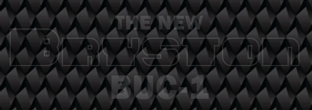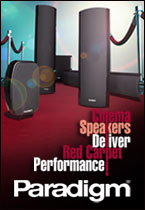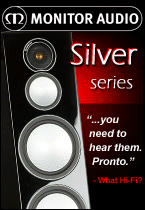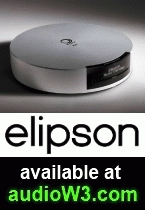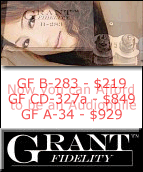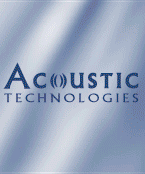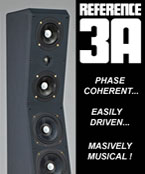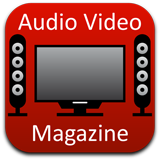
NAD offers a wide range of integrated amplifiers and a choice of two different CD players suitable for every wallet. The C525BEE CD player and the C325BEE integrated amplifier are NAD’s most affordable building blocks for an entry-level two channel music system. The CD player is priced at $450 and the amplifier goes for $500.
Both the CD player and the amplifier feature rigid metal enclosures and familiar dark gray plastic face plates that NAD has been using in most of their components for many years. Each component came packaged with its own remote, although the SR 5 remote bundled with the amplifier can be used to control both pieces of gear.
The front panel of the C325BEE amplifier contains seven buttons for source selection and dials for bass, treble, balance and volume. There are also buttons for power, tone defeat (which by-passes the tone control section) as well as a headphone jack and 3.5 mm stereo plug for mp3 players. The rear panel features 7 RCA outputs, 2 tape loops and a preamp output. A matching NAD PP-2 phono stage can be connected to the tape loops in order to connect a turntable to the amplifier. The C525BEE CD player’s front panel has eight disc navigation buttons, a power button and an attractive, blue backlit display. When a CD is inserted, the display shows the number of tracks on the CD in little square boxes. The rear panel of the CD player contains a single set of RCA outputs and a digital coaxial output. Both remote controls are made of plastic with rubber buttons. They are both comfortable to hold and equally responsive. The SR 5 remote contains direct input buttons and worked very well for controlling all functions of both components in our set up.
The C325BEE is a brand new, updated version of the C320BEE integrated amplifier with improved sound performance. It uses several innovations that trickled down from NAD’s top of the line Masters Series. The C325BEE is rated at 50 watts for each of its two channels at 8 ohms and is capable of driving 4 ohm speakers with ease. It has a frequency response rated from 20 Hz to 20 kHz (+/- 2 dB), a THD of 0.02% (20 Hz - 20 kHz from 250 mW to rated output) and a signal-to-noise ratio of 100 dB (1 kHz). The C525BEE CD player is an updated version of the C521BEE. This player was so new at the time of this review that NAD did not have its specifications posted on their website. It allows playback of CDs, CD-R and CD-RW discs recorded in the 16-bit 44.1 kHz PCM format. Output is provided in the forms of analogue L/R RCA and digital coaxial. The power cords are permanently attached to both components so they can’t be upgraded.
Instead of plugging both components’ power cords into a power bar, I plugged the CD player’s power cord into the switched AC outlet on the back of the amplifier. This allowed both components to power on/off with a single press of the power button on the remote. Otherwise, each component would have to be powered on individually. This is a very useful feature that nicely integrated this two channel system.
The first disc that I listened to on the NAD pair was Jarre in China. Then, I followed with some tracks from The Best of Chopin (Golden Classics) and Norah Jones’ Feels Like Home albums. A few of the tracks from Jarre in China showed that the NAD set up was capable of producing a soundstage with an impressive depth - much larger than other systems in this price range. The Axiom Audio M80s assisted me in testing this because they can certainly paint a very large soundstage. It didn’t take long for me to conclude that the NAD amplifier had a pleasing, warm character that brought realness to every song that I listened to. The mid-range was incredibly clear and the highs were smooth and crisp. The bass performance of the amplifier was clean and tight, with a good amount of punch. The dynamics and pacing of this system were great - the music flowed with a sense of pleasantness and involvement. The dynamic headroom was substantial and always there when needed. The combination of the warmth and the detail resolution of this system provided for a truly fantastic listening experience.
For those who like to stretch the amplifier’s power capabilities and listen to music at very loud levels, NAD has included a Soft Clipping switch at the rear of the C325BEE. When an amplifier is driven to its limits, a harsh, distorted sound can be heard at peak volume levels. With the Soft Clipping turned on, the NAD’s circuitry gently limits the output of the system to eliminate distortion if the amplifier is overdriven. A green LED on the front panel indicates when this feature is turned on. I cranked the volume with this feature turned on and it did a great job, although I never turn the volume up this high when listening to music for pleasure.
Surprisingly, the buttons on the front panels of both components feel rather flimsy, especially compared to the other components in this test - fortunately they have nothing to do with sound performance. The tone balance and volume dials on the other hand appear to be of much better quality.
There is no question about it, the NAD duo created a sophisticated two-channel music system that was all about the music. Its musical ability aspires only to higher price separate audio components - for this it shines above many similarly priced components. With a price of $950 for both pieces, it’s affordable enough even for non-audiophiles who have an appreciation for great quality sound.
Manufacturer:
NAD Electronics
www.nadelectronics.com
Distributed in Canada by Lenbrook Canada 905-831-6555
Price:
$450 (C525BEE CD player)
$500 (C325BEE integrated amplifier)
C525BEE CD player
• 20-bit Burr-Brown Sigma Delta DAC chip
Complete technical details about the C525BEE were not available at press time because this model is a new addition to the NAD line-up. For more info check the NAD website at www.nadelectronics.com.
C325BEE Integrated Amplifier
• Power Output: 50W into 8 Ohms
• Total Harmonic Distortion (20 Hz-20 kHz): 0.02%
• Frequency Response : ±0.2dB 20 Hz-20 kHz
• Signal/noise ratio; ref 1W: 100dB
• Signal/noise ratio; ref rated power: 117dB
• Clipping power: 68W (18dBW)
• IHF dynamic headroom at 8 ohm: +3.4 dB
Click here to discuss this article on the CANADA HiFi Forum




